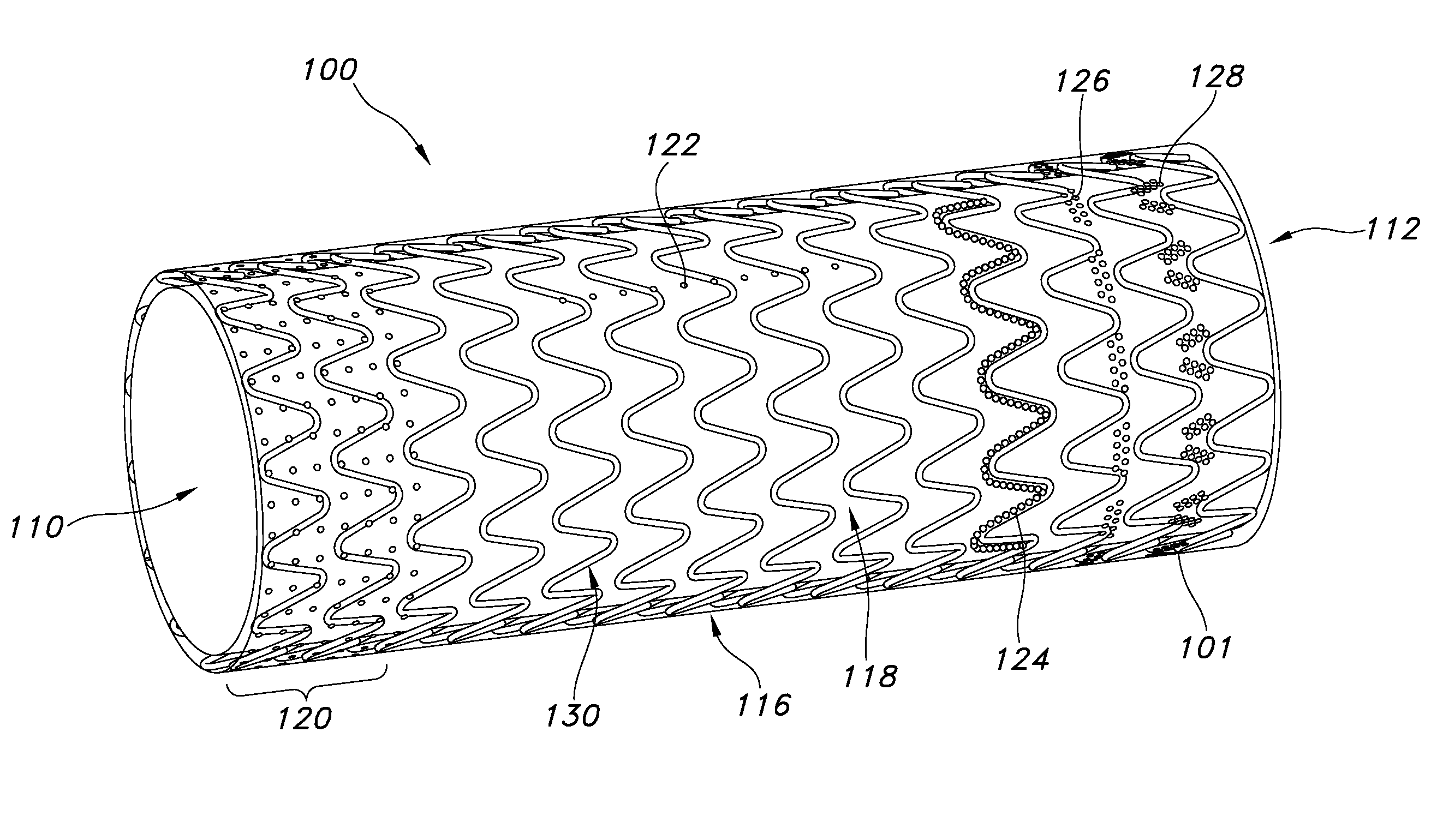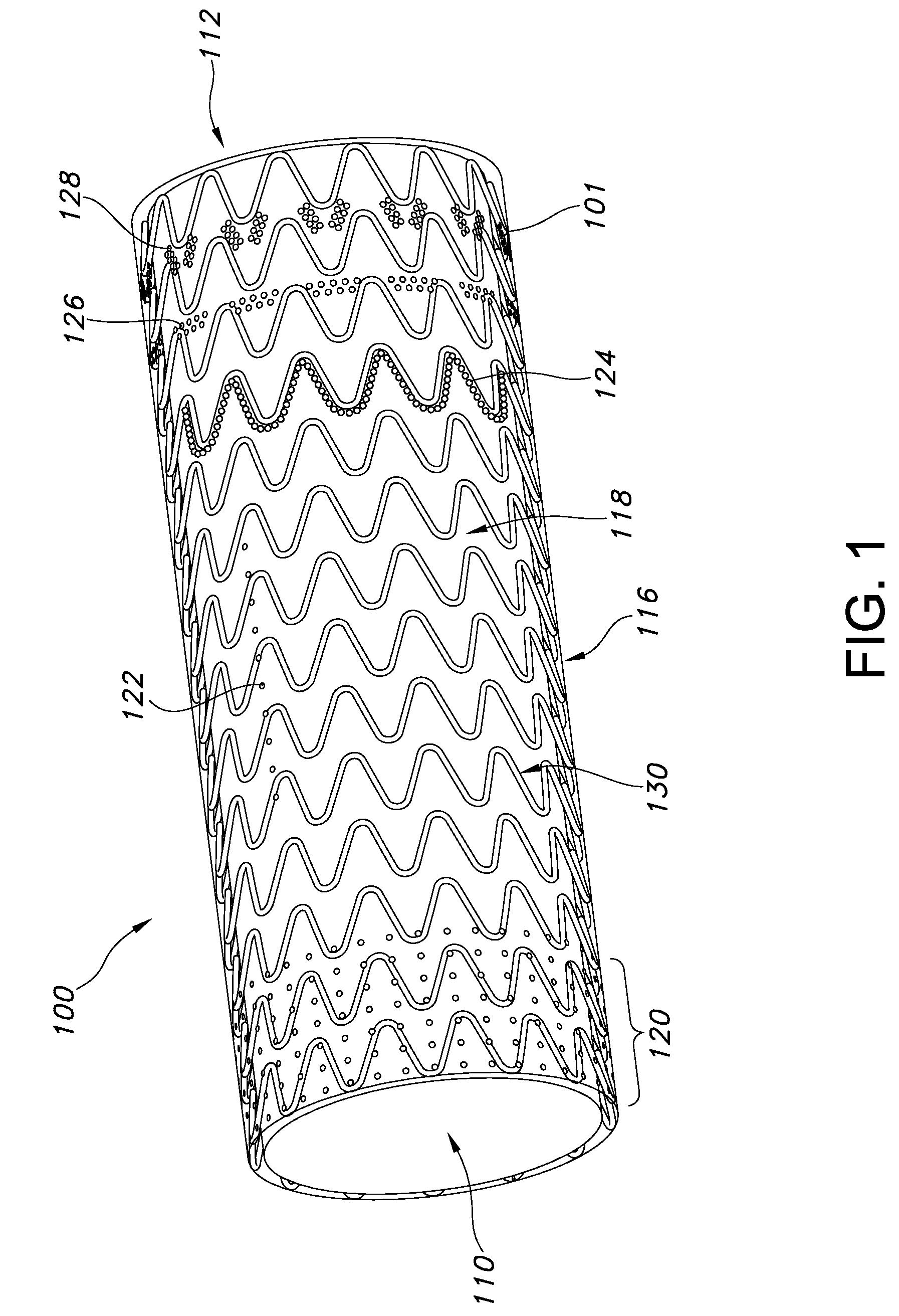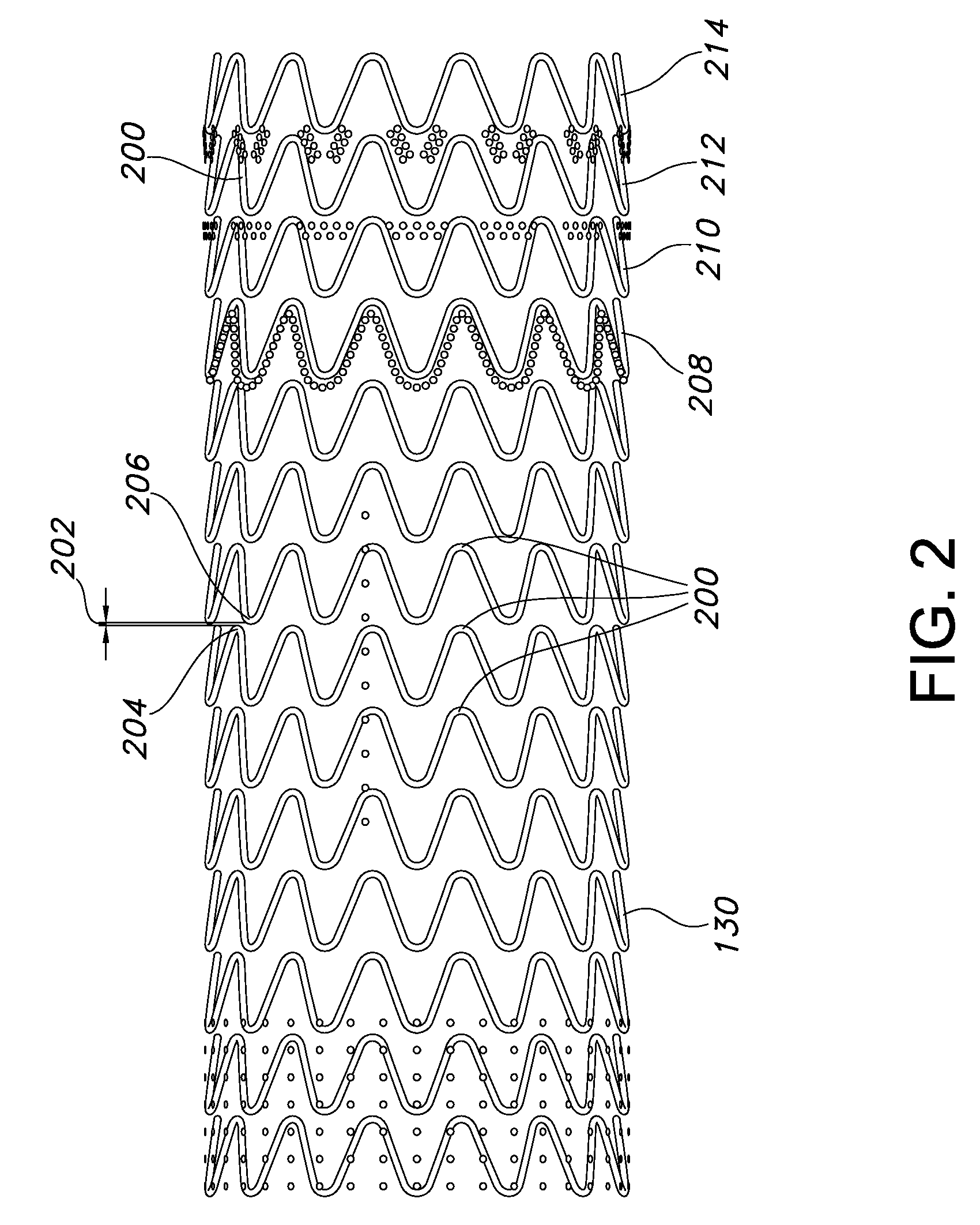Flexible stent-graft device having patterned polymeric coverings
a flexible, polymer-based technology, applied in the field of implantable prosthesis, can solve the problems of plastic deformation of the stent-graft endoprosthesis, prone to leakage of blood therethrough, physical deformation, etc., to improve flexibility, reduce stiffness and permeability, and increase longitudinal flexibility
- Summary
- Abstract
- Description
- Claims
- Application Information
AI Technical Summary
Benefits of technology
Problems solved by technology
Method used
Image
Examples
Embodiment Construction
[0031]The following is a detailed description of the preferred embodiments of the present invention. The description is meant to describe the preferred embodiments, and is not meant to limit the invention in any way.
[0032]FIG. 1 is a perspective view of a stent-graft 100 having enhanced flexibility of the present invention. The stent-graft 100 is a hollow, tubular structure or device having opposed open ends 110, 112. The stent-graft 100 includes a tubular wail 116 disposed between the open ends 110, 112. As depicted in FIG. 1, the tubular wall 116 extends along the longitudinal direction. The tubular wall 116 includes a graft 118 having plurality graft portions or regions 120, 122, 124, 126 and 128 that, as described below, have varied or different flexibilities, such as bending flexibilities and will be further described with reference to FIG. 2. The graft wall 116 also extends around the circumference of the stent-graft 100. The tubular wall further includes a stent device 130, w...
PUM
 Login to View More
Login to View More Abstract
Description
Claims
Application Information
 Login to View More
Login to View More - R&D
- Intellectual Property
- Life Sciences
- Materials
- Tech Scout
- Unparalleled Data Quality
- Higher Quality Content
- 60% Fewer Hallucinations
Browse by: Latest US Patents, China's latest patents, Technical Efficacy Thesaurus, Application Domain, Technology Topic, Popular Technical Reports.
© 2025 PatSnap. All rights reserved.Legal|Privacy policy|Modern Slavery Act Transparency Statement|Sitemap|About US| Contact US: help@patsnap.com



